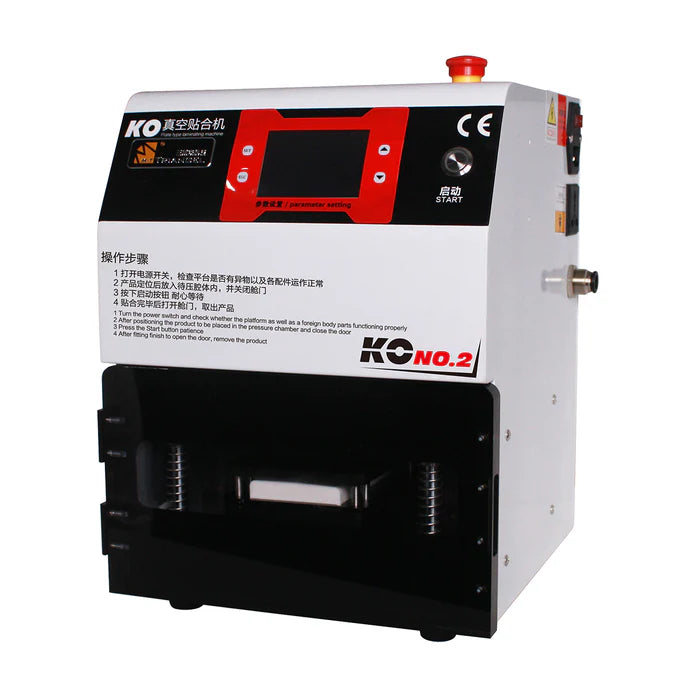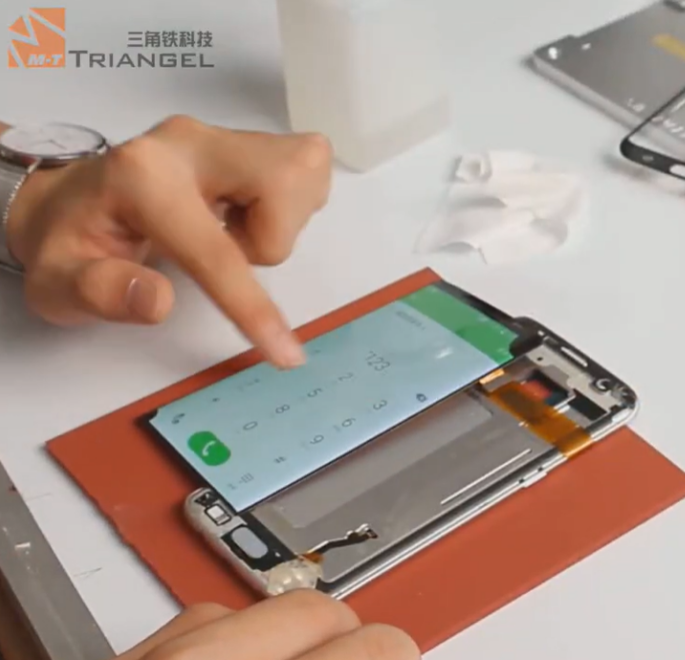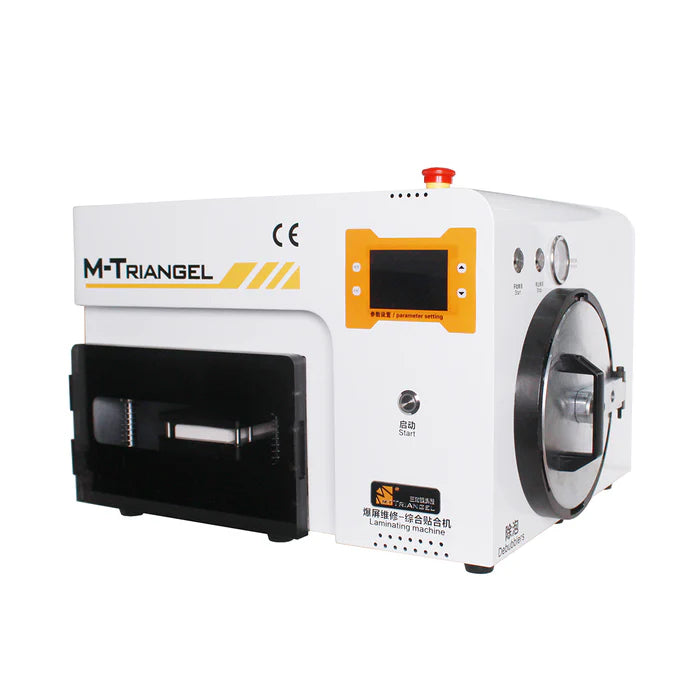With advancements in technology, laminating machines have evolved to provide faster, more efficient, and higher-quality results. One such machine is the KO-NO2 Vacuum Lamination Machine, which combines cutting-edge features to deliver superior lamination results. In this blog post, we’ll provide a comprehensive guide on how to use the laminating machine, with a specific focus on the KO-NO2 Vacuum Lamination Machine.
What is a Laminating Machine?
A laminating machine is a device used to apply a protective layer of plastic film to documents, photographs, or other materials. This layer helps preserve the item by shielding it from damage caused by moisture, dirt, and wear. Laminating machines are widely used in various sectors, such as printing, packaging, electronics, and even personal use for document protection.
The KO-NO2 Vacuum Lamination Machine is an advanced device designed for precise and efficient lamination. It is specifically engineered to handle the delicate process of laminating electronic components, such as smartphone screens and other sensitive materials, ensuring that they remain intact without damage.
The KO-NO2 Vacuum Lamination Machine: Features & Benefits

Before we dive into how to use the laminating machine, let’s first take a closer look at the KO-NO2 Vacuum Lamination Machine's key features and benefits:
-
Vacuum Technology: The KO-NO2 laminating machine uses a vacuum suction system to hold the material in place during the lamination process. This ensures that the plastic film is applied evenly without air bubbles, wrinkles, or imperfections.
-
Precision Heating: With built-in precise temperature control, the KO-NO2 laminating machine ensures that the materials are exposed to the correct temperature for an optimal lamination result.
-
Compact and User-Friendly: Despite its advanced technology, the KO-NO2 laminating machine is designed to be compact and easy to operate, making it perfect for both small businesses and personal use.
-
Multi-Purpose Applications: Although primarily used in the electronics industry for laminating screens and displays, the KO-NO2 machine can also be used for various other applications, such as laminating prints, documents, and more.
-
Efficient and Quick Operation: This machine is designed for high throughput, reducing downtime and improving overall production efficiency.
Step-by-Step Guide: How to Use the KO-NO2 Vacuum Lamination Machine
Now that you are familiar with the features and benefits of the KO-NO2 Vacuum Lamination Machine, let's walk through the steps to use it efficiently. This step-by-step guide will ensure that you achieve the best possible results every time.
Step 1: Setup and Preparation
Before you begin the lamination process, it's important to properly set up the laminating machine and prepare the materials. Here’s how you can do it:
-
Place the Laminating Machine on a Stable Surface: Make sure the machine is positioned on a flat, stable surface where it won’t be disturbed during the operation. It should also have enough space around it for ventilation and easy access.
-
Power the Machine On: Ensure the power supply is connected, and then turn on the KO-NO2 laminating machine using the power button. Check the machine’s display to ensure it is powered up properly.
-
Select the Proper Settings: Depending on the material you are laminating, you will need to select the correct temperature and vacuum settings. The KO-NO2 Vacuum Lamination Machine comes with pre-programmed settings for different materials, but you may need to adjust them based on the thickness or type of material.
-
Prepare the Laminating Film: Select the appropriate laminating film or protective layer for the job. For the best results, use high-quality films designed for the type of material you are working with. Cut the film to the required size, ensuring it is slightly larger than the material you are laminating.
-
Prepare the Material to Be Laminated: Make sure the material you are laminating is clean and free from dust, dirt, or oils. For sensitive materials like smartphone screens, ensure the surface is completely clean to avoid any imperfections in the final result.
Step 2: Load the Material into the Lamination Chamber
The KO-NO2 Vacuum Lamination Machine uses a vacuum system to ensure that the material is perfectly aligned and held securely during the lamination process. Here’s how to load the material into the chamber:
-
Place the Material on the Lamination Platform: Carefully position the item you are laminating on the lamination platform. Ensure that it is centered and aligned properly.
-
Position the Laminating Film: Place the pre-cut laminating film over the material, ensuring it covers the surface completely. Make sure there is an even overlap around the edges of the material.
-
Close the Lid and Lock the Chamber: Close the lid of the laminating machine and lock the chamber. The vacuum suction system will automatically begin to pull air out of the chamber, securing the material and film in place.
Step 3: Begin the Lamination Process
With everything in place, it’s time to start the lamination process. Follow these steps:
-
Start the Lamination Cycle: Once the material is in position and the chamber is locked, start the lamination process by pressing the appropriate button or selecting the "Start" option on the machine’s control panel.
-
Monitor the Temperature and Pressure: As the lamination cycle begins, keep an eye on the temperature and vacuum pressure readings. The KO-NO2 machine has a built-in monitoring system that will alert you if any adjustments are needed.
-
Wait for the Lamination to Complete: The lamination process will typically take a few minutes, depending on the material and thickness. During this time, the vacuum pressure ensures that the film is tightly adhered to the material.
-
Check for Quality: Once the cycle is complete, carefully open the machine and remove the laminated material. Check for any air bubbles, wrinkles, or imperfections. If everything looks good, the lamination is complete.
Step 4: Post-Lamination Care
After the lamination process, it’s important to properly handle and store the laminated material to preserve its quality:
-
Let the Material Cool: Allow the laminated material to cool down for a few minutes before handling it. This will ensure the lamination film hardens and sets properly.
-
Trim Excess Film: If there is excess laminating film around the edges, carefully trim it with a sharp blade or scissors. Be sure to leave a small margin around the edge to prevent peeling.
-
Inspect the Laminated Item: Inspect the laminated material for any imperfections or issues. If you notice any, repeat the lamination process with adjusted settings.
Tips for Optimal Lamination Results
To get the best results from your KO-NO2 Vacuum Lamination Machine, here are a few tips:
-
Use High-Quality Laminating Film: The quality of the laminating film plays a significant role in the final result. Always choose premium-quality laminating films that are compatible with the materials you're working with.
-
Clean the Machine Regularly: Regular maintenance is essential for ensuring the longevity and efficiency of your laminating machine. Clean the vacuum chamber and platform regularly to prevent dust and debris buildup.
-
Test Settings: Before running a large batch of items, it's always a good idea to test the settings on a sample piece. This will help you fine-tune the temperature and vacuum pressure for optimal results.
-
Avoid Overloading the Machine: Ensure that you only laminate one item at a time, especially for delicate materials. Overloading can result in uneven lamination or damage to the machine.
Conclusion
Using the KO-NO2 Vacuum Lamination Machine can significantly improve the quality and efficiency of your lamination process. By following the steps outlined in this guide, you can ensure that your materials are laminated with precision and care, providing them with lasting protection and professional finishes. Whether you're working in electronics, printing, or other industries, mastering the use of a laminating machine like the KO-NO2 can enhance your workflow and deliver top-notch results every time.
Remember, regular maintenance and testing are key to ensuring the machine continues to perform at its best. With these tips and techniques, you’ll be able to harness the full potential of your KO-NO2 Vacuum Lamination Machine, making your lamination process seamless and effective.



